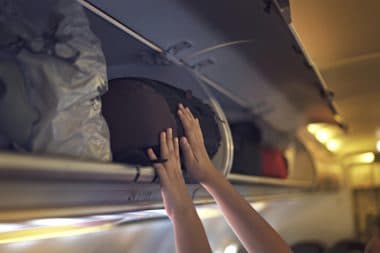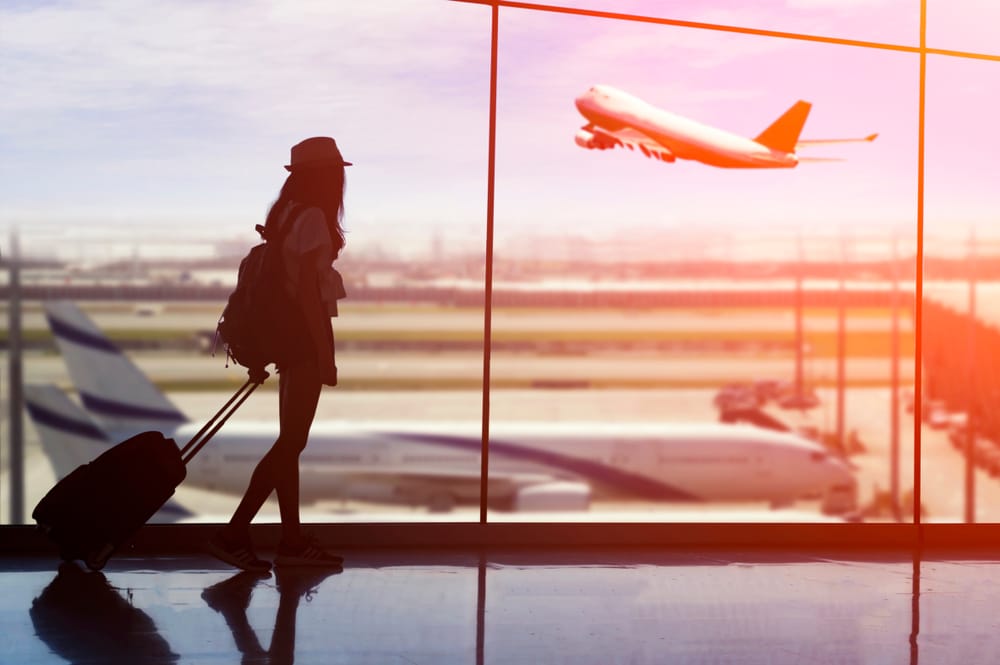Have you ever thought about going on holiday or taking a flight with only a carry-on suitcase? With a few restrictions on weight and size, this is no problem at all for shorter trips. In addition to choosing a suitable suitcase, you should also find out about the common rules and regulations on the subject of hand luggage.
For example, the airlines’ rules on weight and size are particularly important and in this regard you should strictly follow the guidelines given by the airlines. You should also familiarize yourself with the rules for taking liquids on the plane. Furthermore, you should also pay attention to the regulations about the permitted and prohibited items in hand luggage. That’s why we’ve summarised the most important rules, rules and regulations for you here. This should make your next flight much more relaxed, as you will know all the important information after reading this article.
Size & Weight
There is no uniform regulation on the size and weight of hand luggage on the part of the airlines. Rather, each airline has its own maximum values, i.e. Before each flight, you must find out the maximum size of the carry-on suitcase and how heavy. Below is an overview of some airlines:
| Airline | Size & Weight (hand luggage) |
| British Airways | 56 x 45 x 25 cm & 23 kg |
| Condor (TUIfly) | 55 x 40 x 20 cm & 6 kg |
| easyJet | 56 x 45 x 25 cm & no restriction |
| Iberia | 56 x 45 x 25 cm & no restriction |
| KLM | 55 x 35 x 25 cm & 12 kg |
| Lufthansa (Austrian Airlines, Eurowings, Swiss) | 55 x 40 x 23 cm & 8 kg |
| Ryanair | 40 x 20 x 25 cm (for an additional fee: 55 x 40 x 20 cm & 10 kg) |
| SAS Scandinavian Airlines | 55 x 40 x 23 cm & 8 kg |
| Turkish Airlines | 55 x 40 x 23 cm & 8 kg |
| Wizz Air | 40 x 30 x 20 cm (for an additional fee: 55 x 40 x 23 cm & 10 kg) |
As can be seen from the table, the dimensions differ by only a few centimeters. Likewise, the permitted weight does not differ so much from each other and is usually in a range of 6 to 10 kg. A carry-on suitcase with a size of 55 x 40 x 20 cm is a good compromise or, to be on the safe side, the dimensions of 55 x 35 x 20 cm would also be good. With the first size specification you can get away with most airlines, as it is exactly the required dimensions or With a size of 55 x 40 x 20 cm, they are even below the maximum dimensions required by some airlines. The second proposed suitcase size would be suitable for airlines such as KLM, which allow a maximum of 55 x 35 x 25 cm. With the second size you can get through almost all airlines, but you would also have a little less storage space available with such a suitcase.

There are backpacks that can be expanded with the help of straps (drawstrings). A backpack with such drawstrings, for example, has the dimensions of 55 x 35 x 20 cm when the straps are tightened and can be expanded in size with open straps. With such a backpack, you would be ideally prepared for any airline and could pack more if necessary with an airline that allows a larger carry-on suitcase. By the way, there are also trolleys that can be expanded in a similar way.
Carrying liquids in hand luggage
Carrying liquids in hand luggage is a little easier, as uniform regulations apply. Compliance with these EU regulations is also not controlled by the airlines, but by security personnel at the appropriate security checkpoints.
You just need to remember the following two rules:
- Liquid containers (e.g. shampoo bottles) must not exceed the maximum volume of 100 ml
- All containers with liquids must be packed in a resealable and transparent bag
You should definitely follow these two rules so that nothing goes wrong at the security check. Package sizes that contain only small residues of liquids, i.e. less than 100 ml, but have a total volume of, for example, 200 ml, are still not allowed to be taken with you. It is not what counts how much is still in the packaging, but the original total volume is decisive. In addition, you should take the bag with the liquids out of the bag before the check, as the bag must be x-rayed separately.
The clear liquids include, among others: drinks, deodorants, gel, shampoo, creams. Products that have a cream, gel and foam-like consistency are also considered liquids. With food and cosmetics, you should therefore be careful whether it has one of the properties just described and, if in doubt, stow it in the liquid bag.
If you do not follow the rules on liquids, the consequences are not so serious – in the worst case, you will have to throw away the liquids.
Prohibited and permitted items on the aircraft
Finally, a few tips on which items are prohibited on the plane or in hand luggage and which you can take with you without any problems.
Typically, commercially available (small) electrical appliances such as smartphone devices, computers (notebook, laptop), tablet, electric shaver, mobile game console, camera, or an e-book reader are permitted. You can also carry power banks in your hand luggage if the capacity does not exceed 100 Wh or 160 Wh. Some airlines have slightly stricter regulations for 160 Wh power banks, so it is recommended to only carry those with a capacity of 100 Wh.
In principle, medication is always allowed in hand luggage, but there may be a few things to consider when preparing. In the case of liquid medication or syringes, you should have proof of need with you. For prescription drugs, such as narcotics, you must always carry a medical certificate with you.
Strictly prohibited items in carry-on baggage include dangerous items and weapons of any kind. For example, long pointed objects, rackets and tools are classified as dangerous objects, i.e. things that could be used as weapons. At Messer, there is an exception rule. As long as the blade length does not exceed 6 cm, you can take it with you in your hand luggage. When it comes to potentially dangerous items, you should always ask yourself whether you really need them in your cabin luggage. In case of doubt, you may be refused permission or at least lead to critical questions.
The items listed here are only an overview of the permitted and prohibited items in hand luggage. There can be no complete list, as security checks at the airport are subject to generally worded EU regulations that cannot list every item.


